We choose products for the Food52 shop not only because we're obsessed with them (always) -- most of the time we're just as inspired by the creatives who make them. This is where we share their stories.
Today: Celina Mancurti has been working in textile design since she was a student in Buenos Aires, and now she runs her own shop in Florida crafting elegent, eco-friendly linens for the kitchen and table. Her story speaks to the power of a dream.

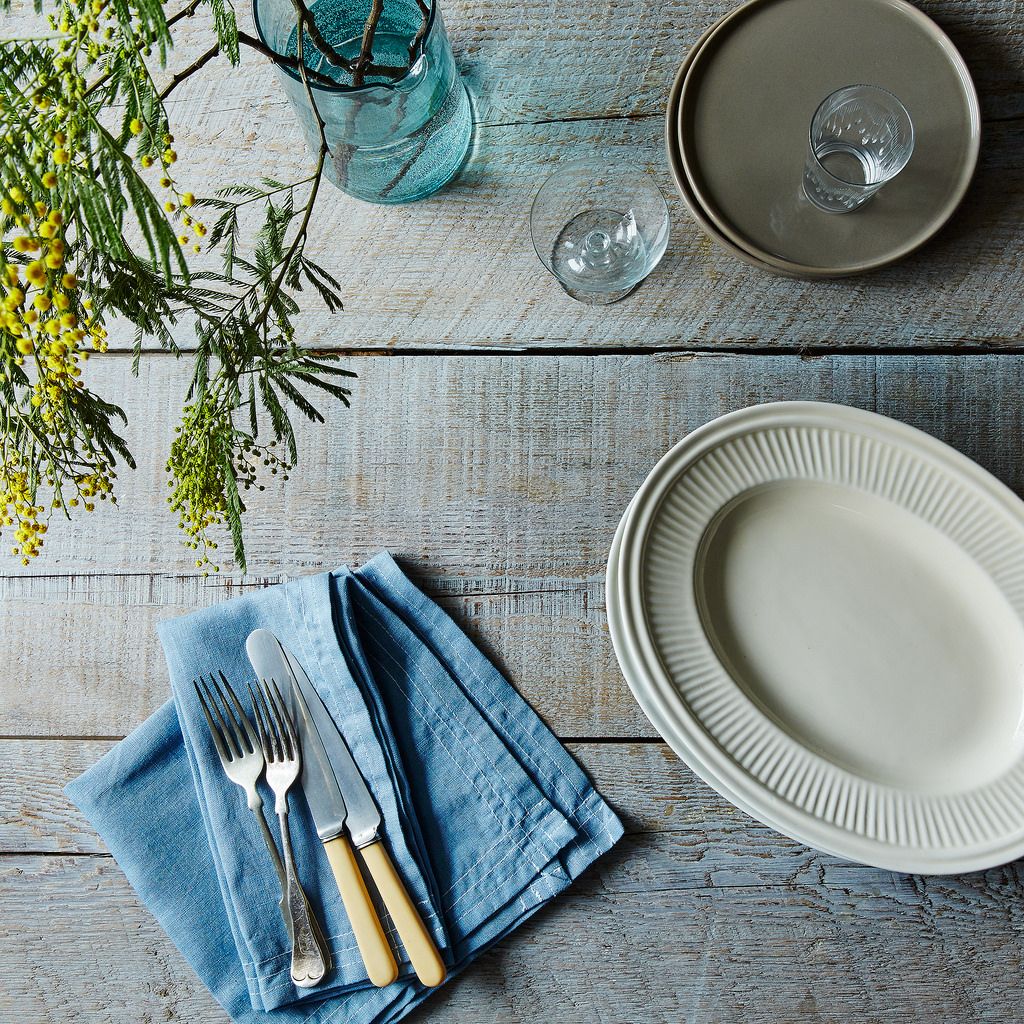
Celina in her studio; her indigo linen napkins and tablecloths, which are Food52 exclusives
Celina Mancurti has no regrets. From a basement studio in Tampa, Florida, she runs her own business making tabletop linens, from napkins and runners to ethereal tablecloths that beg to flutter on a clothesline, heralding spring. Each piece is the making of an heirloom: hewn in a fabric that gets more elegant with time; carefully designed and hand-stitched; and screen-printed with old-world techniques that are disappearing in a world of digital production.
“Nobody is helping me, nothing I make is expensive, and my whole studio and knowledge are my own,” she tells me. Her work is exquisite, so I can hardly blame her for being confident -- it’s a genuine, hard-earned pride. This business is a dream that Celina’s been chasing her whole life, and one that’s taken her across an ocean to see through.
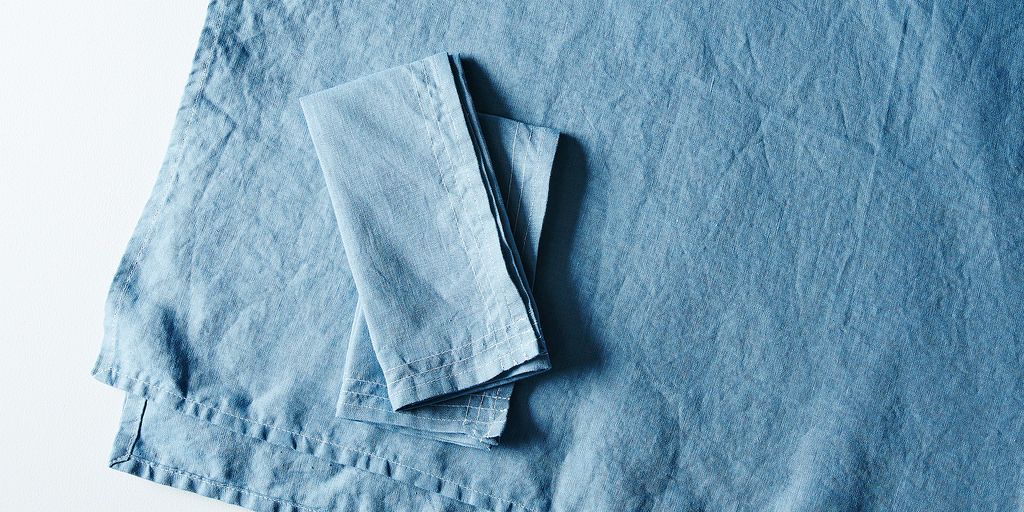
Born and raised in Buenos Aires, Celina got her start at an old Argentinian silk mill, where she worked while pursuing a degree in textile design. Then, even large-scale production was a business of hand-crafting, and the factory was a bustling, creative affair that inspired her. Celina’s memory of this time and place is vibrant: “The walls were filled with a collection of intricate flat screens, while the designer’s room was stocked with hand-painted designs and transparencies. Forty long printing tables were surrounded by workers pushing squeegees along screens in a synchronized motion to complete the designs.”
She worked with the production team creating color combinations for clients and observing the artisans with delight. “Not many people have the opportunity to see how a fabric is really screened and how a screen is made,” she says. Between stacks of screens, the shelves were lined with kitchen tools used for printing -- heavy-duty mixers, scales for weighing colors, and squeegees like pastry scrapers. Celina might still be there, were it not for changing times.
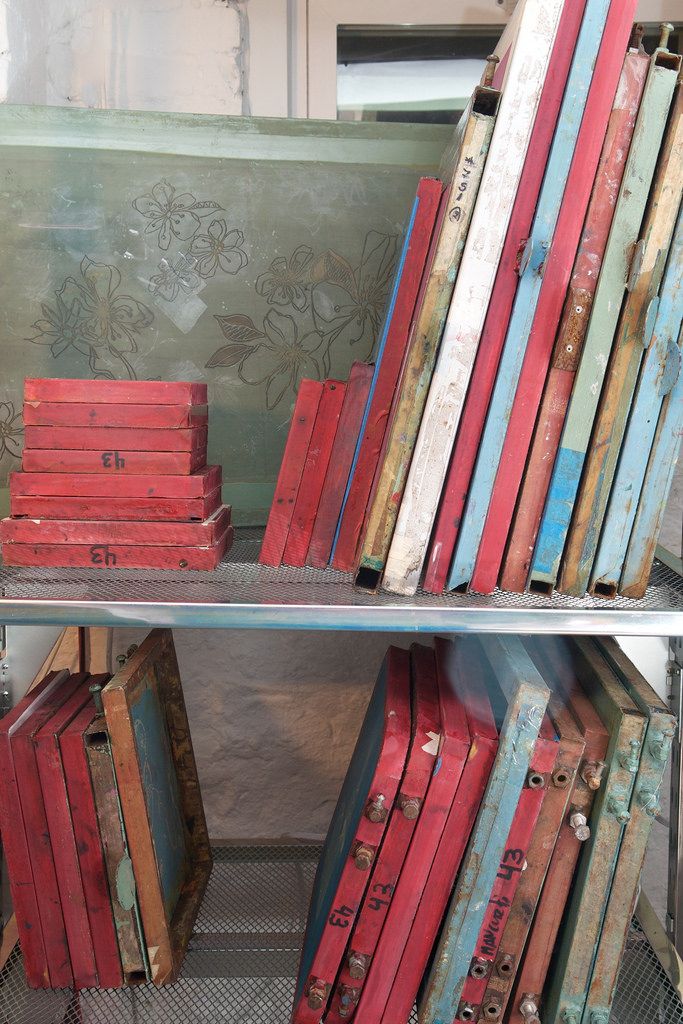
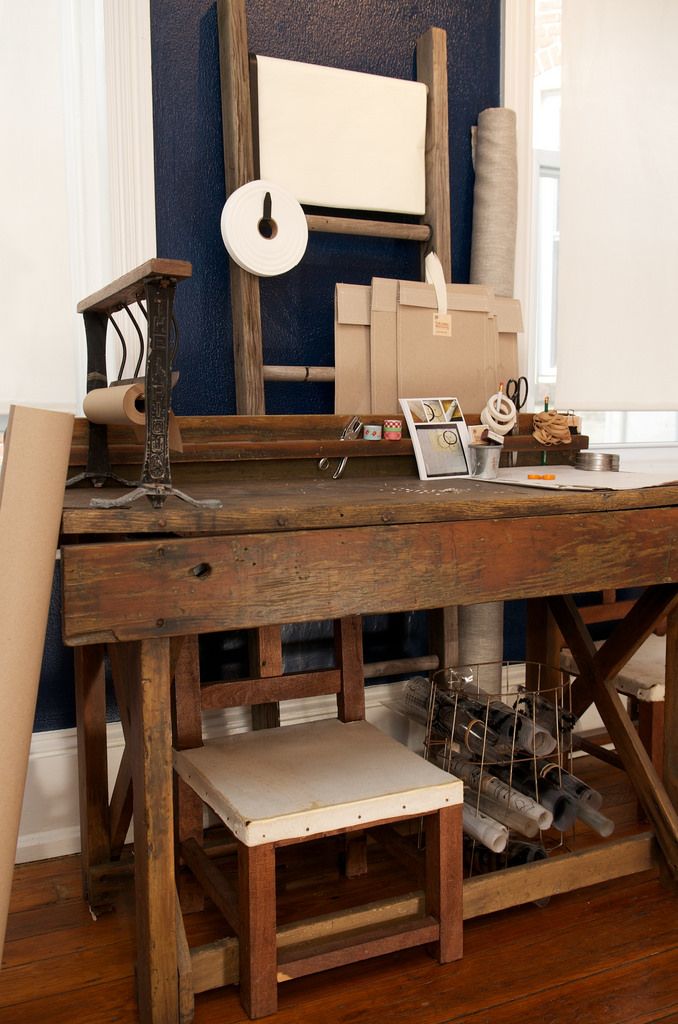
Celina's printing screens and printing table in her studio in Tampa, Florida
The arrival of new technologies, like printing devices from Italy and computers used for design, saw artisans suddenly replaced by machines. Watching the transition, Celina’s dream took shape: “I wanted to preserve the handcrafted work that had long been the hallmark of textile-making,” she says. “I envisioned having a workspace where I could explore and preserve old-fashioned techniques and share my love for handmade products.”
She continued working in textile production until 10 years ago, when she followed her husband to the United States. I asked if that's what jump-started her career. “Actually, it was like starting from scratch,” she replied. But driven as ever, Celina went after fobs in fashion until she landed a gig at the University of Delaware teaching courses in textile design. Her dream was never far from mind, and during one trip home to Buenos Aires soon after, she packed up a single printing screen to bring back.
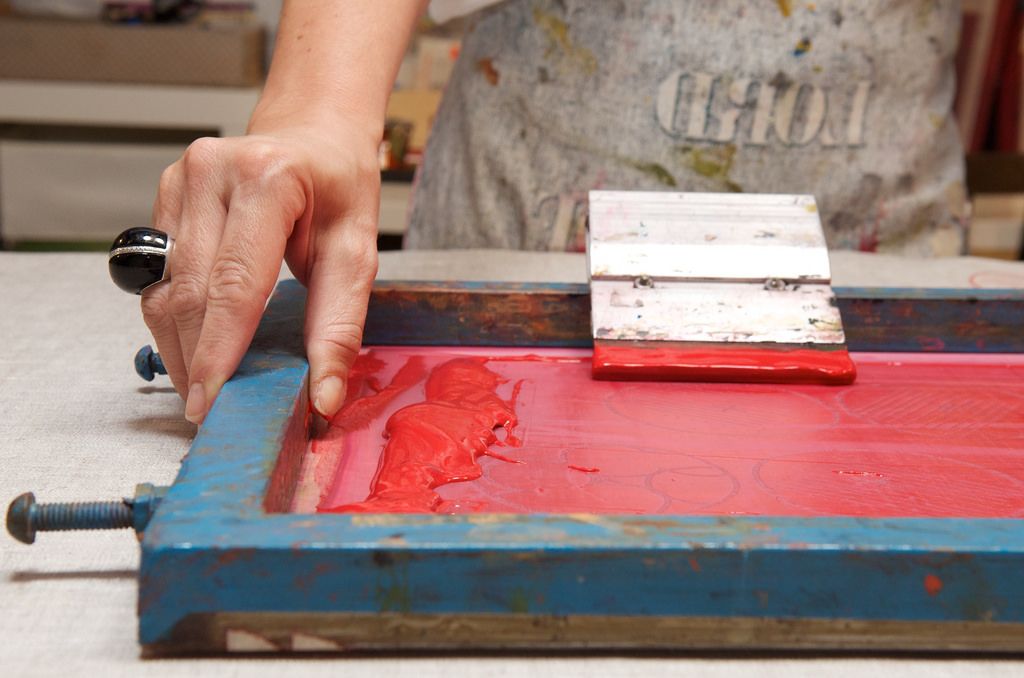
“People are always waiting to have everything before they start chasing their dreams, but I said this to my students: Don’t wait to start doing the thing you want to do. Do it now, with what you have around. The rest will follow.” True to her words, Celina set up shop and started printing fabrics in her basement. She made and sold her first tablecloth in 2008, opened an Etsy store, and the rest of the story wove itself: “My first order was for seven yards of linen and that was too much. Now I need 100 yards in every order,” she says.
All of Celina’s designs start with her own drawings, and she screen-prints them with natural pigments from suppliers in Argentina. She focuses exclusively on linen, which is woven from naturally-sustainable flax fibers -- with the added benefit that it gets a little more beautiful every time you wash it. (Try that with cotton.) Effortless and elegant, each piece is the picture of aging gracefully.

Head here to shop for Celina's table linens.
Product photos by James Ransom; photos of Celina and her studio by Danielle Quigley








See what other Food52 readers are saying.